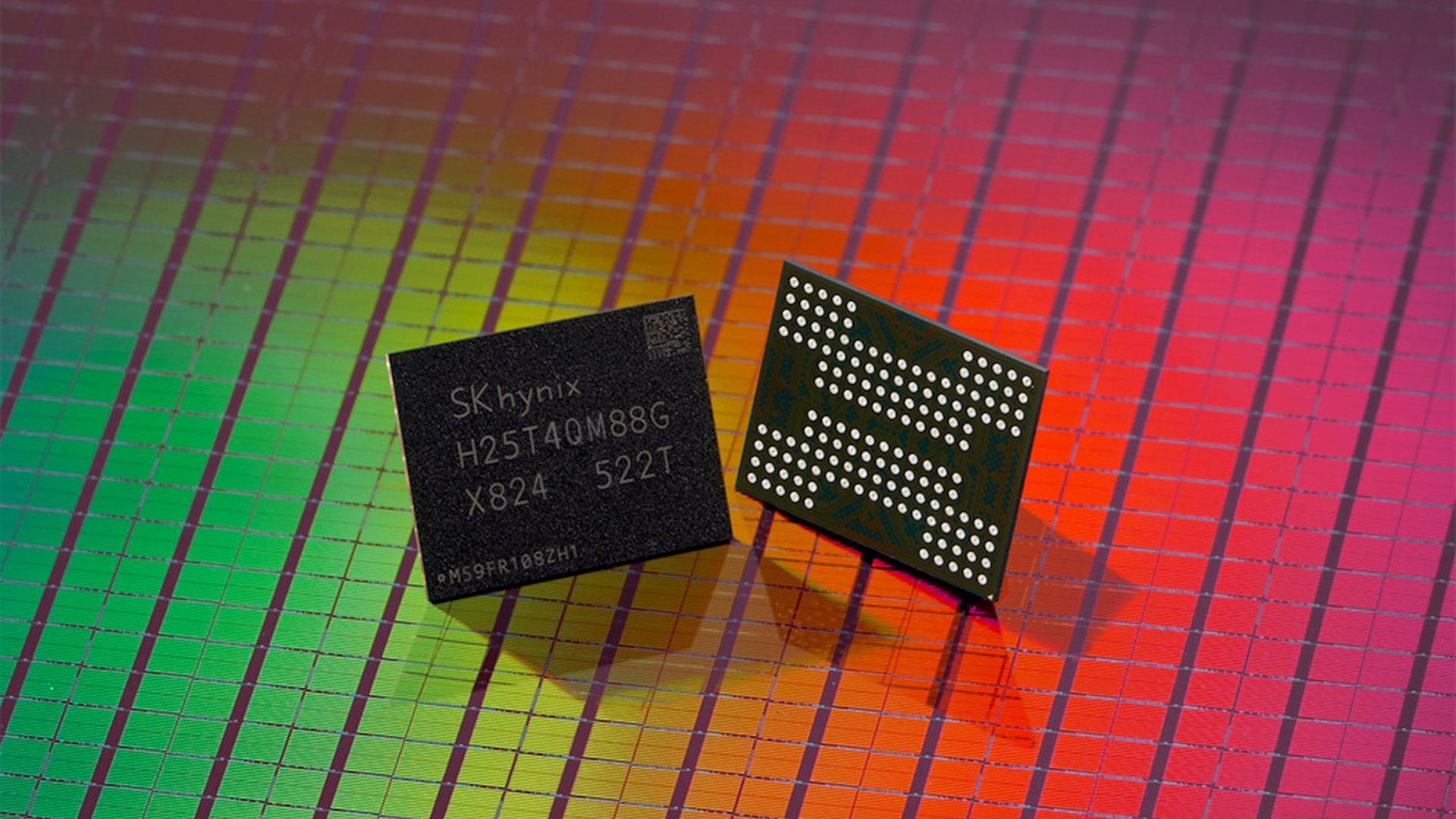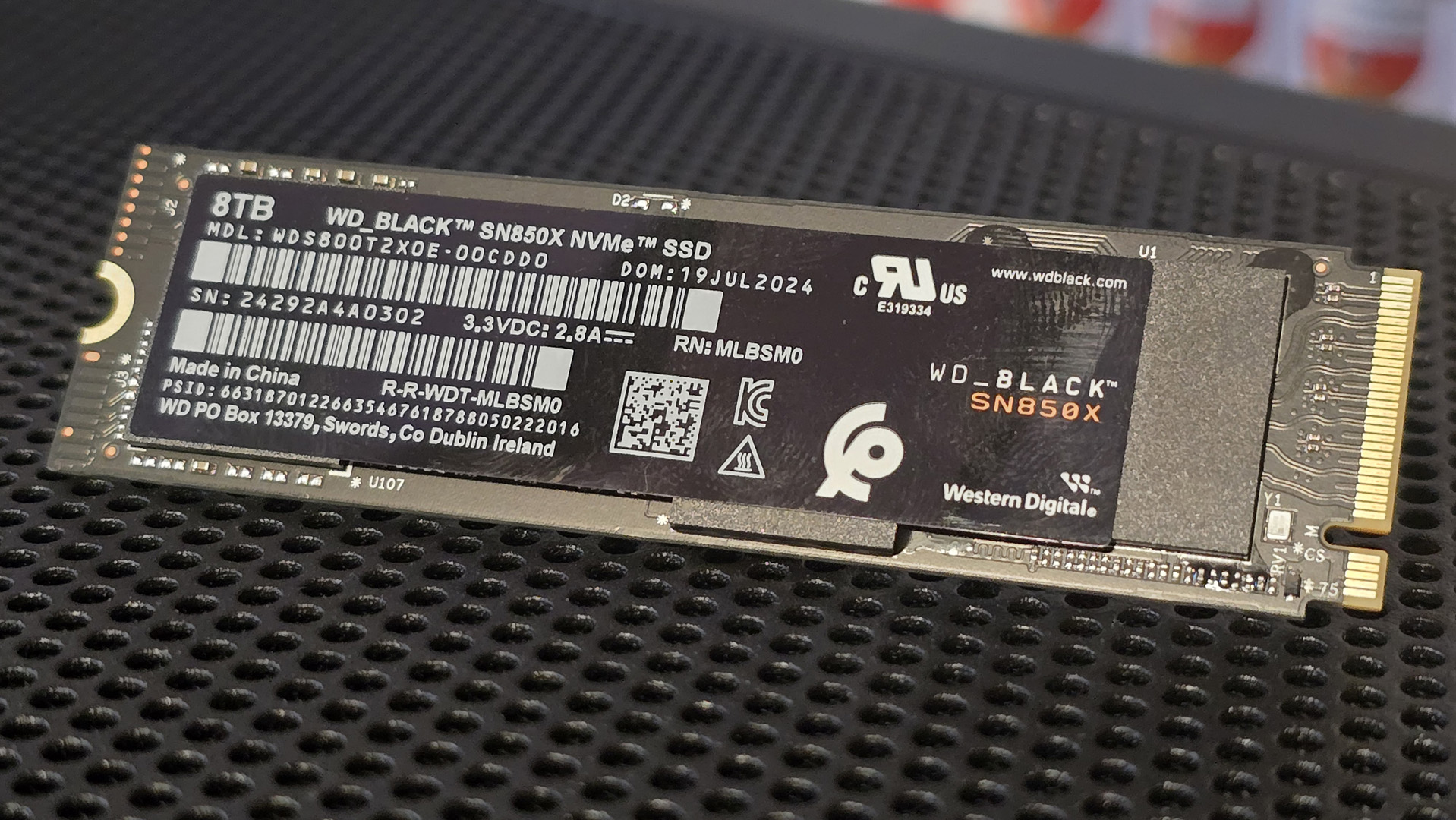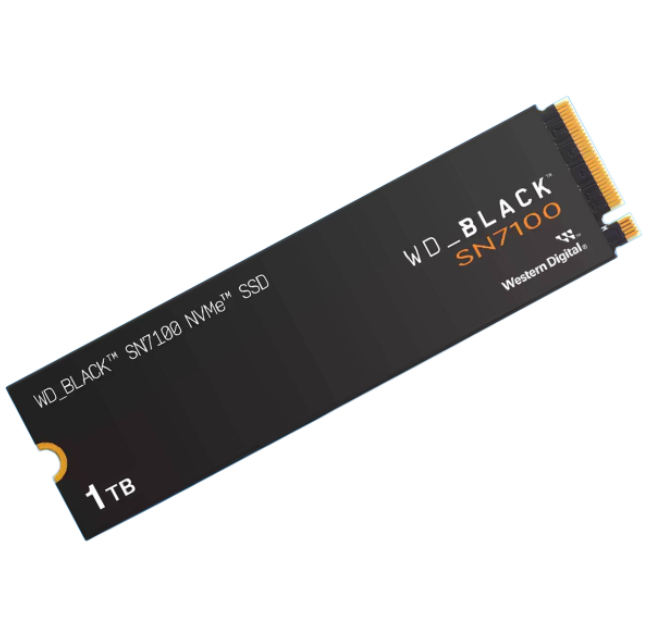SK Hynix's 'world first' 321-layer QLC flash memory chips, boasting 100% faster transfer speeds and up to 56% greater write performance, will be in gaming PCs next year
This could be the turning point where we all stop going 'Eww' when we see a QLC SSD.

For SSD enthusiasts, there are three letters to look out for, so they can avoid them at all costs: QLC. While this type of flash memory has been great for reducing the cost of large-capacity drives, it's not ideal for performance or longevity. However, a new type of QLC chip announced by SK Hynix is so much better than previous offerings that those three letters could well be exactly what you look for.
The press announcement from SK Hynix is predictably a bit light on details, but all of the important numbers are there, and they look genuinely good. The number of layers of NAND flash used in each chip is a heady 321. If you scan through our recommendations for the best gaming SSDs on the market right now, you'll see that most are around the 200-mark, and even the largest is 'only' 276.
What makes this noteworthy is that all these layers result in a single flash memory chip having a capacity of 2 Tb or 256 GB. That's double the size of QLC chips normally used in consumer PC SSDs, so you'd need half as many to get the same drive. End result? Cheaper SSDs.
SK Hynix's new chips also increase the number of planes per die by 50% (six, instead of four). NAND flash chips are hierarchical structures, with planes being relatively near the top of the chain, comprising hundreds of millions of flash memory cells. They work independently within the chip, so by having more of them, the new QLC chips can transfer more data per second, as well as read/write more frequently.
The additional planes and extra layers all add up to giving the chips a serious bump in performance. "Data transfer speed has doubled, write performance has improved by up to 56%, and read performance has improved by 18%," according to the press release.

These aspects have traditionally been QLC's Achilles heel. Quad-level cells (QLC) store 4 bits of data, which is why they've been instrumental in increasing SSD capacities, but the more levels you use in each cell, the lower the overall performance is (mostly because it just takes longer to process four separate signal levels compared to just one or two), and it increases the wear rate of the cells.
This is why SK Hynix has ramped up the number of layers and planes—the cells themselves aren't any faster in the new chips, but the overall structure now helps to mitigate QLC's failings.
Keep up to date with the most important stories and the best deals, as picked by the PC Gamer team.
SK Hynix has only just begun mass production of its new 321-layer QLC flash chips, which is why we won't see them being used in consumer products until next year. The good news is that PCs are first in line to receive them, so there's a good chance we'll either see big capacity SSDs fall in price or we'll see cheaper QLC SSDs running just as fast as the TLC ones that proliferate our best SSD guide.

1. Best overall:
WD_Black SN7100
2. Best budget:
Biwin Black Opal NV7400
3. Best PCIe 5.0:
WD_Black SN8100
4. Best budget PCIe 5.0:
Crucial P510
5. Best 4 TB:
TeamGroup MP44
6. Best 8 TB:
WD_Black SN850X
7. Best M.2 2230:
Lexar Play 2230
8. Best for PS5:
Silicon Power XS70
9. Best SATA:
Crucial MX500

Nick, gaming, and computers all first met in the early 1980s. After leaving university, he became a physics and IT teacher and started writing about tech in the late 1990s. That resulted in him working with MadOnion to write the help files for 3DMark and PCMark. After a short stint working at Beyond3D.com, Nick joined Futuremark (MadOnion rebranded) full-time, as editor-in-chief for its PC gaming section, YouGamers. After the site shutdown, he became an engineering and computing lecturer for many years, but missed the writing bug. Cue four years at TechSpot.com covering everything and anything to do with tech and PCs. He freely admits to being far too obsessed with GPUs and open-world grindy RPGs, but who isn't these days?
You must confirm your public display name before commenting
Please logout and then login again, you will then be prompted to enter your display name.

